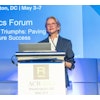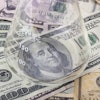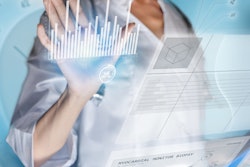
Radiology social media influencers share a variety of characteristics -- from type of degree to professional affiliations -- and there are even geographical patterns, a study published August 25 in the Journal of the American College of Radiology has found.
The findings shed light on how social media is used in radiology and underscore the need for the specialty to stay on its cutting edge, wrote a team led by Mohamed Jabal, MD, of the Mayo Clinic in Rochester, MN.
"With social media becoming a vibrant hub for the radiology community, highlighting expert leaders and trustful conduits of information in the virtual field is proving crucial," the team noted.
The affordability and accessibility of social media has revolutionized healthcare, making it easier to share medical knowledge, network, and mentor junior clinicians, the group wrote. "Influencers" -- that is, people who educate others or prompt them to action -- can "play key roles in promoting important causes and in spreading extracurricular knowledge to the radiology community, patients, students, and members of the general public who might be interested in specific fields or diseases," the authors explained.
Jabal and colleagues sought to explore characteristics associated with radiology influencers via a study they conducted by searching for the term "radiology" on Twitter using the Right Relevance machine-learning service. They classified top influencers by affiliated institution, area of influence, dual degree, gender, geography, influence score, medical school, physician degree, research activity, subspecialty, and title.
The team found the following regarding the top quartile of influential figures:
- 87% were physicians.
- 60% were males.
- 93% were located in the U.S.
- Prevalent backgrounds included neuroradiology (21%), abdominal imaging (12%), and artificial intelligence (11%).
Of the top 100 figures, 81% were U.S. medical school graduates, 97% held medical degrees, 28% held dual degrees, and 58% offered educational content. Most held leadership positions (58%) and academic professorship titles (70%).
The group also found that influencers were most frequently from California (13%), Massachusetts (9%), Georgia (8%), Pennsylvania (6%), and New York (5%). The top five radiologist-affiliated institutions included Emory University in Atlanta (7%); John Hopkins School of Medicine in Baltimore (4%); University of California, San Francisco (4%); the University of Pennsylvania in Philadelphia (3%); and the University of Wisconsin in Madison (3%).
The highest influence scores belonged to society leaders, mainly at the American College of Radiology (ACR), as well as chairs of departments, Jabal and colleagues reported.
Social media has a key role in positive influence in radiology, they concluded.
"Identifying the most active social media users in radiology could assist healthcare professionals and patients in following reputable figures and organizations in the field," they wrote.
The complete study can be found here.




















